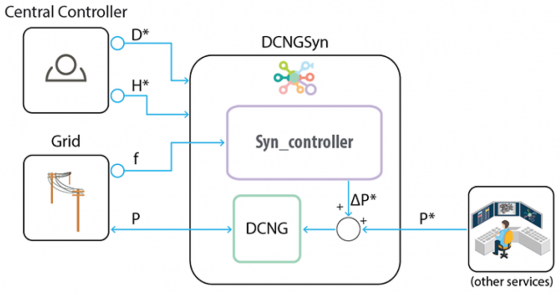
Today’s transmission network is reliable and controllable even if its stability may be jeopardized soon by the forthcoming high penetration of renewable energy sources (RES) needed to reach the 2050 decarbonization goal and the heavy development of Energy Communities.
The number of synchronous generators (SGs), which contribute to guaranteeing system frequency and dynamic stability through their intrinsic inertia and damping, is expected to decrease progressively. The insertion of RES-equipped micro/nanogrids and motor loads interfaced to the grid through electronic converters is expected to grow. Being converter-interfaced, both RES and loads are inertia/damping-less. This lowers the overall inertia and damping, thus menacing the system frequency and dynamic stability.
To support the electrical system in preserving its stability, DCNanoSyn focuses on the synthetic inertia/damping emulation provided by converters installed in DC nanogrids (DCNGs). The target of DCNanoSyn is the definition and implementation of a central controller in charge of determining the proper amount of synthetic inertia and damping contribution to be requested at the distribution feeder (DF) node level. The central controller will evaluate how this contribution needs to be split between a set of distributed DCNGs, each one afferent to a distribution node. A controller at the single DCNG level will be also designed to provide the DCNG elementary contribution. DCNanoSyn also aims at analyzing some of the main effects of DCNGs widespread deployment in a nationwide power grid.
The DCNanoSyn roadmap is the following.
- Identification of benchmark power grids with transmission and distribution feeders and centralized generation by conventional SGs. Analysis of the effects of the progressive insertion of aggregated DCNGs supplying synthetic inertia and damping in place of SGs. Evaluation of the degree of equivalency of the system, both at transmission and distribution level, with SGs or distributed DCNGs.
- Investigation of a methodology to estimate the amount of synthetic inertia and damping required at the DFs, i.e., at the transmission level, to balance the decommissioning of conventional SGs, and implementation of the central controller.
- Design and simulation of a local controller (Syn_controller) for the DCNG inverter, which sets the proper active power reference so that the DCNG behaves as a virtual SG, providing the desired amount of synthetic inertia and damping to the corresponding distribution node.
- Testing through simulation of the effective aggregate inertia/damping contribution provided by several aggregated DCNGs scattered in the selected DFs.
- Implementation and testing of the Syn_controller in a DCNG laboratory prototype (DCNGSyn).